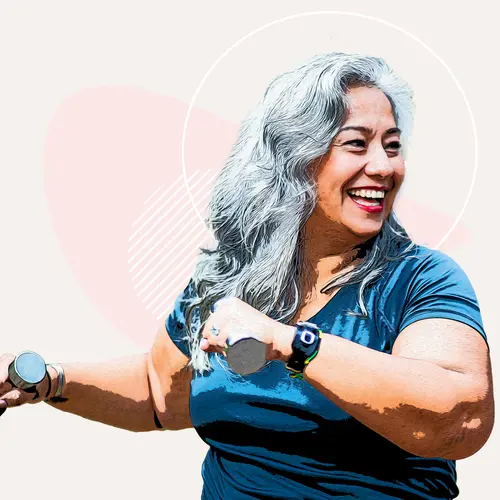What are the best ways to exercise and improve your bone health when you have osteoporosis? Try weight-bearing workouts to build stronger bones. Talk to your doctor and make sure the workout you choose is safe for you. Then give these latest trends a try!
1. Tai Chi
Tai chi -- a form of slow, graceful moves -- builds both coordination and strong bones. A study reported in Physician and Sportsmedicine found that tai chi could slow bone loss in postmenopausal women. The women, who did 45 minutes of tai chi a day, 5 days a week for a year, had a rate of bone loss up to 3.5 times slower than those who didn't do tai chi, according to bone mineral density tests.
2. Yoga
A study reported in Yoga Journal found an increase in bone mineral density in the spine for women who did yoga regularly. From the slow, precise Iyengar style to the athletic, vigorous ashtanga, yoga can build bone health in your hips, spine, and wrists -- the bones most vulnerable to fracture.
Standing poses like Warrior I and II work the large bones of the hips and legs, while poses like Downward Dog work the wrists, arms, and shoulders. Both the Cobra and Locust poses, which work the back muscles, may preserve the health of the spine. Yoga also sharpens your balance, coordination, concentration, and body awareness -- and thus helps prevent falls.
3. Brisk Walking
This classic workout is a great way to boost your bone health. A study of nurses found that walking 4hours a week gave them a 41% lower risk of hip fractures, compared to walking less than an hour a week. Brisk walking is best, but you can adapt your speed to your current fitness level. Walking is free, and you can do it anywhere, anytime, even when you're traveling.
4. Golf
Shouldering that golf bag around 18 holes, and swinging the big clubs to drive the ball long, adds up to a lot of upper-body work. And all that walking, and chasing balls lost in the rough, means plenty of work for your hips and spine.
5. Dancing
Maybe you've got two left feet. No problem! Even if you're not Fred Astaire, you might enjoy social dances such as the waltz, tango, salsa, samba, or East coast swing. Or you might sign up for a gentle adult ballet class or jazz dance class. Or Zumba or another dance-inspired aerobics class at your gym -- anything that gets you moving. A lot of them now combine strength training with dance or step moves -- and are also good for your balance.
6. Hiking
You'll get out in nature and get low-impact weight bearing activity on your next hike. The work of weight-bearing -- and the impact as your feet hit the ground -- can increase bone density, especially in your hips. You'll get even more impact on those bones if you're going uphill or downhill. More impact on your feet and legs translates into more bone density.
And with hiking, boredom is rarely an issue. You can socialize in a hiking club and enjoy new landscapes.
7. Racquet Sports
Pickleball, tennis, squash, and paddle tennis can rally your bone density. You're stressing your racquet arm, wrist, and shoulder every time you hit the ball, and working your hips and spine with all that running around.
If you play singles, you'll get a lot more from your workout in terms of bone health, since you'll be running around more.
Lifting weights, using the weight machines at your health club, or doing calisthenics with a resistance band or your own body weight are forms of strength or resistance training. You're working against some form of resistance to stress a sequence of muscles and bones. Strength train at least twice a week to stimulate bone growth.
If you're not sure how to get started, book a session with a trainer, who can show you simple moves to do safely.
Thin Bones Beware
Take a few exercise precautions if you already have bone thinning:
- Because your fracture risk is higher than normal, be cautious about trying any exercise with the potential for serious falls, like downhill skiing, ice skating, or inline skating.
- If you have bone thinning in your spine, you may want to forgo any deep backbends in yoga.
- Again, check with your doctor before starting any new exercise program, especially if you're taking medications that slow your coordination or throw off your balance.
One final tip: Be patient. The bone-building phase in young adults -- at its speediest -- takes three to four months, and it may take a lot longer if you have osteoporosis or are older. So you won't be seeing big changes on any bone density tests after your first week of working out. Bones change slowly -- but they do change.

